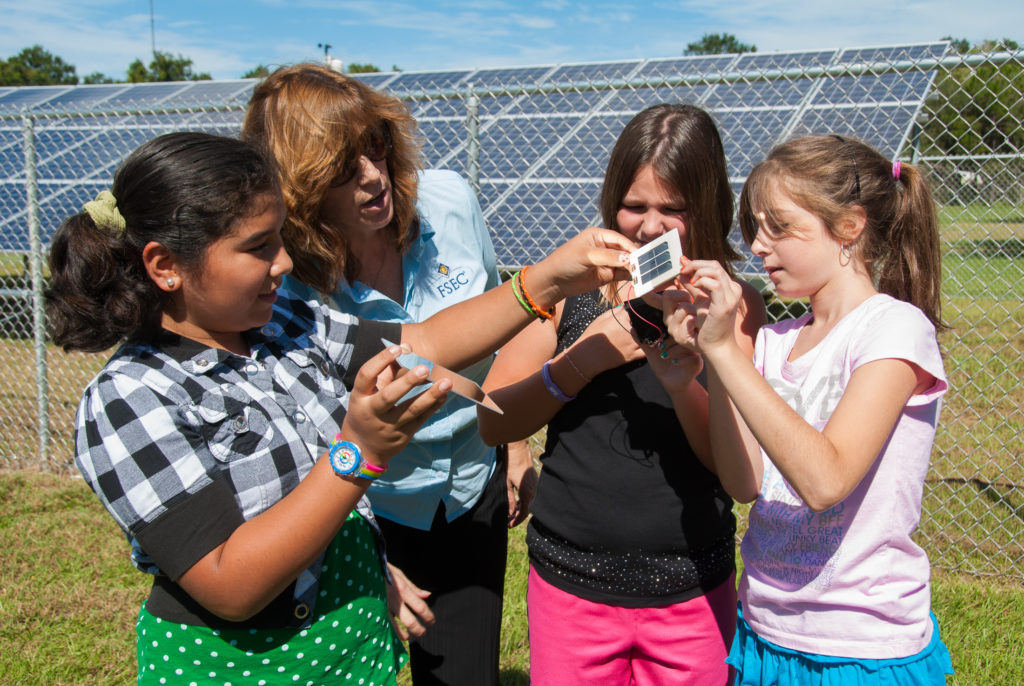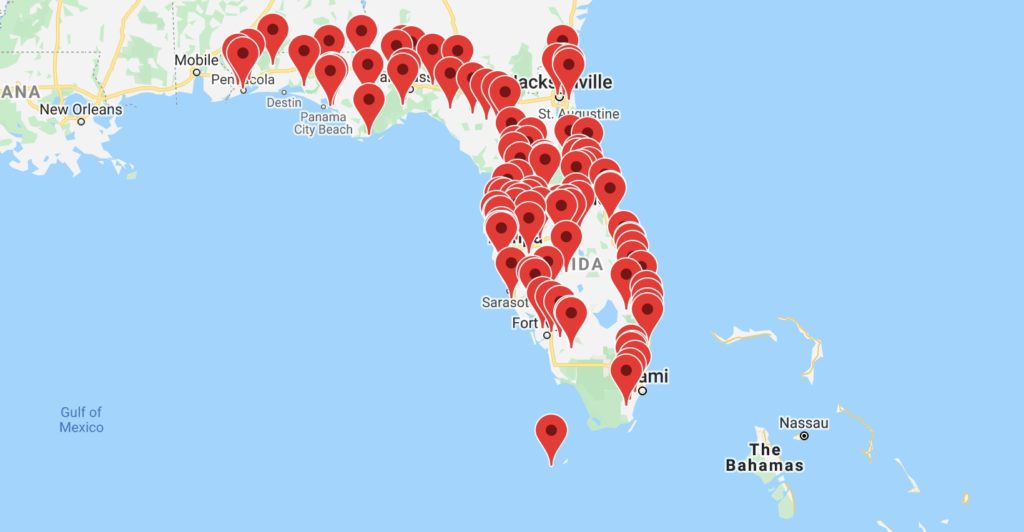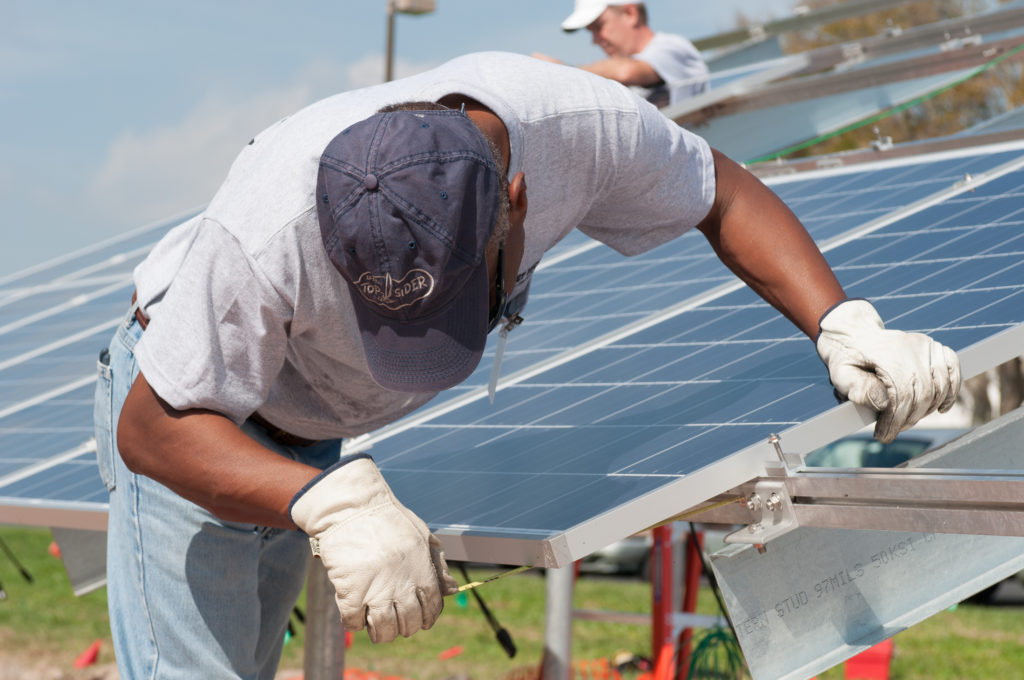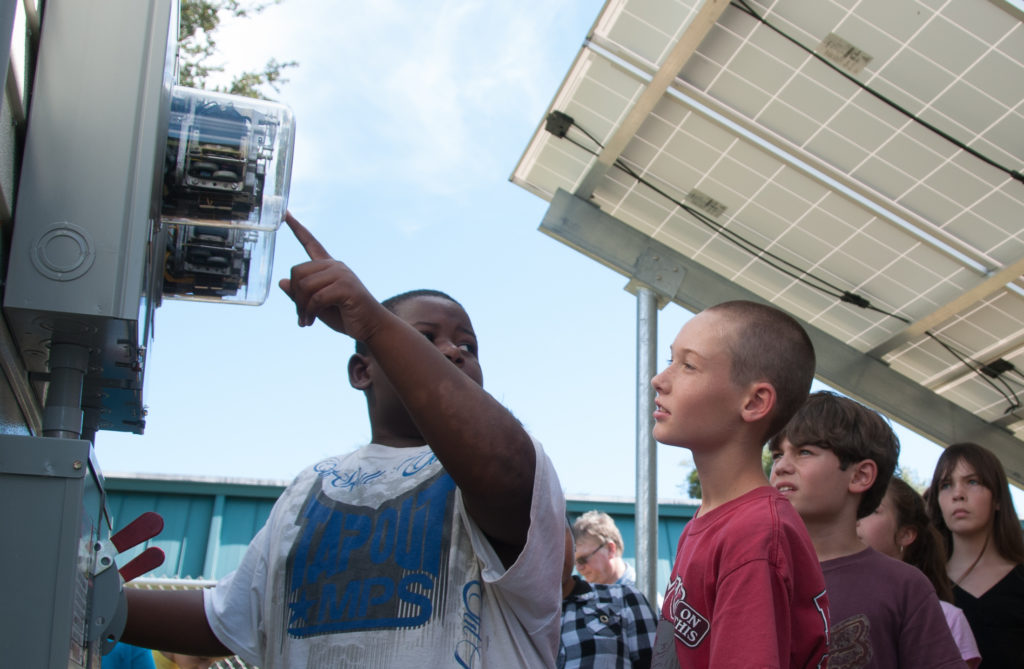
The SunSmart E-Shelter Schools program was the first mass deployment of solar with battery back-up on schools that double as emergency shelters in the United States. More than 115, 10-kW photovoltaic (PV) solar systems are installed on the emergency shelter schools throughout Florida. The Florida Solar Energy Center (FSEC) coordinated the installations, which began in 2010.
This ambitious program brought together school administrators, code officials, teachers and students, solar industry professionals, researchers, and emergency management and utility personnel to create a community of solar advocates throughout the state. The SunSmart E-Shelter Program has added more than one megawatts (MW) of combined photovoltaic generating capacity to Florida using American-made components.
Education and Outreach

Through the SunSmart E-Shelter program’s education and outreach efforts, more than 350 Florida teachers received professional development in the science and use of photovoltaics. A companion, inquiry-based curriculum rich in STEM (science, technology, engineering, and math) content was designed for students to explore:
- how photovoltaics work;
- what impact the system has on their school;
- other alternative energy sources;
- how to prepare for disasters;
- relationships between energy and the environment, history, geography, economics, and the arts.
The curriculum encourages best-teaching practices through project-based learning that enables students to solve problems using critical thinking and data analysis. In addition to the curriculum, each school received a kit of instruments that allow students hands-on opportunities for learning, turning ordinary classrooms into mini-photovoltaic laboratories. View sample data of a typical solar system on a Florida school.
Photovoltaics are the ideal vehicle to spark student’s imaginations and encourage exploration of other energy and environmental topics. As one student remarked, “PV is like magic, turning sunlight into electricity” and his team mate replied “It may look like magic but it is science!”
Student Impact
More than 50,000 students were introduced to photovoltaics and renewable energy technologies through the efforts of the SunSmart E-Shelter Program. An active solar community is one of the SunSmart E-Shelter Program’s primary objectives; Through teacher and student education activities, this objective is becoming reality in more than 115 schools across Florida.

These systems have become the centerpiece of community events, with students and teachers acting as ambassadors to educate local citizens about the clean, silent electricity produced for their school, and in the event of an emergency, these systems use energy stored in batteries to provide power to the key aspects of the shelter.
Government, Industry, and Utility Partnership
Installing over 100 photovoltaic systems in more than 46 school districts is not a straightforward task. The success of this project is largely due to the strong partnership between the U.S. Department of Energy, State of Florida, University of Central Florida’s Florida Solar Energy Center (FSEC), the Florida solar industry, and utilities.

The American Recovery and Reinvestment Act of 2009 (ARRA), through the Florida Department of Agriculture and Consumer Services, provided the initial $10 Million in funding.
As the program began to gain momentum, utility partners provided additional $2 million in funding to equip schools not initially selected. In addition to monetary support, SunSmart E-Shelter utility partners provided advice and support in executing interconnection agreements and for municipal permitting for each participating county in Florida.
Workforce
At a time when the construction industry was still struggling throughout the U.S., the SunSmart E-Shelter Schools Program worked with seven Florida-licensed solar contractors, and encouraged the creation or retention of jobs in the following industries:
- fencing, landscaping, and surveying;
- electrical and general contracting;
- IT support services;
- custom fabrication.
As part of system design and deployment process, the SunSmart team provided training on the latest developments in:
- applicable National Electrical Code rules;
- information technology and communications equipment and policies;
- emergency power systems and infrastructure.
Code Enforcement and Facility Management
In order to ensure that the photovoltaic systems were installed, operated, and maintained in a safe and reliable manner, FSEC and members of Florida’s solar industry worked closely with code officials in nearly every municipality in the state. This effort included:
- working closely with permitting officials to answer questions about PV technology;
- advising inspectors on recent code changes;
- conducting system installation inspections and provided feedback to installers;
- ensuring that system installers provided on-site training to facility managers;
- training over 100 facility managers on operation and maintenance of the systems;
- ensuring that detailed documentation was provided;
View the video series that was created for facility managers.
Download the Operations Manual and System Overview document.
As a result, municipalities and school districts are better able to handle future solar installations.
Energy and Environmental Impact

Reducing energy costs for schools is a focus for all school districts in these fiscally challenging times. The SunSmart E-Shelter Schools Program helps schools reduce their energy costs by transferring excess energy to the grid. By the end of June 2013, the SunSmart systems had generated an estimated 2084 MWhrs of energy, which at current Florida energy costs, is worth $208,400 and saves over 1400 tons of carbon.
Several SunSmart E-Shelter Schools have been able to increase their LEED certified level after the installation of the photovoltaic systems. Other schools have used the installation of the PV system as a motivation to install other energy-saving devices and retrofits, thereby achieving LEED certification. Another interesting side-effect of the SunSmart program, has been the increased discussion among visitors about the school’s self-sufficiency. The shelter encourages visitors to explore how the rest of the school, and subsequently their homes, could be completely PV powered. In turn, people are also examining electric cars and other energy-saving technologies that had previously been dismissed as a novelty.
Solar-Powered Shelters
Floridians are well versed in the challenges associated with natural disasters. Many residents and shelters make use of fossil fuel-powered generators to provide power when the electrical grid has been compromised. However, obtaining fuel following the storm can be a challenge. Photovoltaics are a natural complement for fossil-fuel generators; They are ready to support the shelter when the sun is shining, and they can work with the on-site generators to provide electricity when there are special needs. Photovoltaics can provide clean, silent power for:
- medical equipment,
- human comfort,
- food preparation, and
- sanitation.
National Award Winner
The Solar Energy Industries Association (SEIA) and the Solar Electric Power Association (SEPA) selected the SunSmart E-Shelter Schools Program as an Honorable Mention for the 2013 Photovoltaic (PV) Project of Distinction Awards.
Announced at the PV America East 2013 in Philadelphia, PA on February 5, 2013, the awards recognize major achievements in U.S. PV solar energy. Each project had to demonstrate a collective benefit to the community and innovative use of policy and financing. There were more than 100 submissions.
Questions?
If you have any questions about this program, please e-mail susan@fsec.ucf.edu.